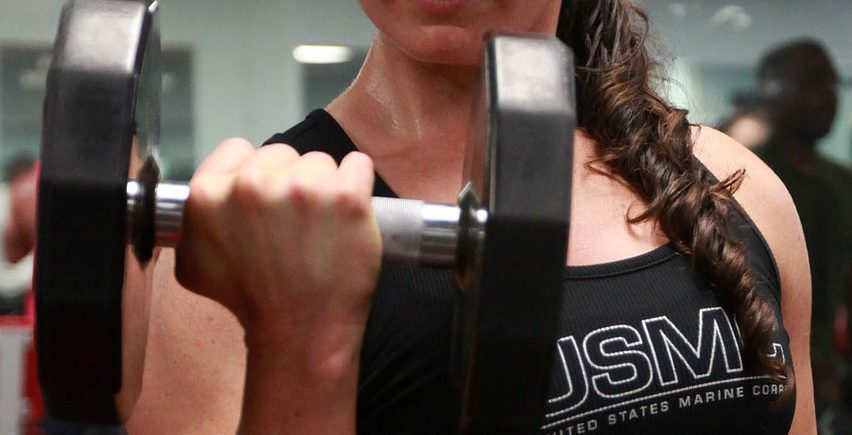If you’re anything like me working out makes you feel energized and clear-minded, but actually gathering enough motivation to go can be difficult. While it isn’t so bad in the summer months, I find it extremely difficult to make it to the gym on cold winter mornings when I know it’s well below zero outside.
When I manage to drag myself to the gym in the evenings I usually feel exhausted from work, and more often than not I’d rather just go home, watch some TV and go to bed.
When I don’t workout though, I always regret it. Here are some tips I’ve found that keep me motivated.
1. Remove invisible barriers
As I mentioned, it can be difficult to drag yourself out of bed and go to the gym on cold winter mornings. One reason for this is that cold weather makes getting out of bed unpleasant, creating an invisible barrier that prevents you from getting to the gym.
Identify the series of steps required to get you to the gym and systematically remove the barriers for accomplishing them one at a time. For instance, if getting out of bed is difficult because of the cold, lay out your gym clothes the night before so you can bundle up straight away and make getting out of the house less painful. Alternatively you can try a Teasmaid or coffee alarm clock.
If you also need to bring a lunch with you, make sure to pack it the night before as well so you don’t have to spend time thinking about what you’ll eat in the morning. Finding simple ways to remove invisible barriers can make it far easier to get to the gym on a regular basis.
2. Get a gym buddy
When I first joined the gym, I signed up at the same time as my brother. We both joined for a period of three months (the minimum membership length at our local gym) and would meet each other most days after work.
This worked out well. We rarely missed a day, largely because we enjoyed each other’s company and saw it as an opportunity to chat. But after the initial three months my brother didn’t renew his membership, which unfortunately left me without a gym buddy. That’s when I got lazy.
To regain my motivation I convinced a friend to sign up and (almost instantly) I couldn’t wait to get started again. A gym buddy not only makes the workouts more fun, but also keeps you accountable.
3. Join a gym you like
The gym I originally joined was fantastic. It had lots of equipment, a swimming pool, sauna and was generally a nice place to be. Not surprisingly, it was quite expensive.
To save money I decided to give another gym a shot. It was around half the price, but offered less equipment and didn’t have a swimming pool. I love to swim, but I thought the lack of a swimming pool was a small sacrifice considering the huge savings.
I hated not having access to a pool. I also hated the lack of air conditioning, the locker shortage and the broken showers. It was a place I didn’t want to be and thus, I stopped going.
Ironically, even the low cost of the gym decreased my motivation further. With the more expensive gym I felt I had to go, otherwise I’d be throwing money away every month. My new gym was so cheap I didn’t really care. Of course, this meant I was throwing money away too.
It’s worth it to join a gym you actually like and that offers the facilities you need if it keeps you motivated to go, even if it’s a little more costly than the alternatives.
4. Track your progress
Nothing kills motivation like going to the gym for months on end and feeling as though you’re getting nowhere. Chances are that you are making progress, but it can be difficult to notice if the process is gradual. This is why tracking is so important.
Keep track of your progress by weighing yourself at the end of each week and keeping a record. I use a free online tracking tool such as MyFitnessPal for this as it makes the process much easier. It also plots your weight on a graph which gives you a visual representation of your progress over time. You can also get a wifi Withings scale or Fitbit Aria.
It’s good to track and measure your body fat percentage too. This allows you to make sure that you’re losing fat rather than muscle.
5. Don’t set overly-ambitious goals
When I joined the gym, my goal was to get a six pack. I thought I could do this in 2-3 months, but soon found out this was an overly-ambitious goal. By the end of those three months I was nowhere near reaching my goal. This made me discouraged and I lost motivation to keep going to the gym.
It’s important to set goals, but you need to make sure that they’re achievable and not overly-ambitious. If you set an achievable goal you’ll feel a huge sense of achievement when you reach it, which will have a positive impact on your motivation.
Set yourself another achievable goal when you reach your initial target, so you’re always working toward something.
6. Reward yourself
For those that like to exercise, this enjoyment offers enough motivation in itself to actually go to the gym. For those that don’t like to exercise it can feel as though you’re putting in a lot of effort without a clear reward, and it can be hard to stay motivated.
One way to combat this is by giving yourself a reward for regularly visiting the gym. It could be as simple as some relaxation time to yourself after each workout or a small indulgence at the end of the week if you reach your goal. Rewards reinforce habits, and once your gym routine is habitual it won’t require willpower.
Exercise is an essential part of your healthstyle, so understanding what motivates you to hit the gym is your key to success.
How do you stay motivated to keep working out?


